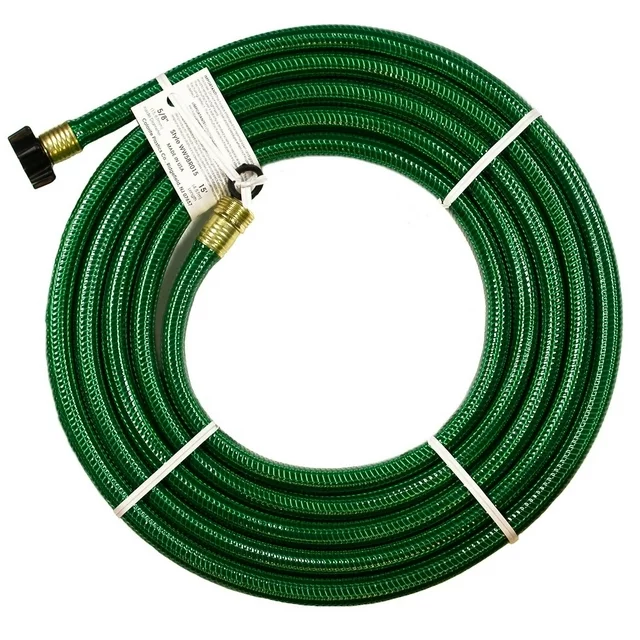How often should you fertilize a lawn? Experts share their tips for the healthiest grass possible
For luscious green grass you should fertilize your lawn at these regular intervals


Fertilizing a lawn is a must, but are you doing it often enough and at the right point in the season? If you want luscious green grass then getting these things right is essential, but according to gardeners, it's something many of us - woe betide - are doing wrong.
After a long hot summer, the grass in your modern garden is probably crying out for some attention. As we near fall (yes, really) now is the perfect time to get outside in the garden and give your lawn a bit of TLC. Does that mean fertilizing, we hear you ask? We asked some experts to find out.
How often should you fertilize your lawn?

So we should all be fertilizing our lawns often, but just how often is the question. According to experts, it might not need to be as regular as you'd think...
'I generally stick to the guideline of fertilizing twice a year, once in spring and again in fall,' explains Ryan Farley, founder of Lawn Starter. 'This should be enough to keep your soil rich with the nutrients a healthy lawn needs to sustain itself.'
If you're not particularly green-thumbed, that might come as a reassuring surprise, but there is a caveat. It all depends on the size of your lawn, its health, and of course, your local climate. Larger lawns might require more regular fertilization, and extreme weather - like intense heat - can lead to risks like burning your lawn if you fertilize during this period.
That said, a few feeds during the growing season (roughly May to July) probably won't go amiss. 'It all depends on the type of fertilizer you’re using,' notes Craig Elworthy, lawn care expert and founder of Lawnbright. 'Generally, it’s common practice to fertilize three to five times during your growing season, spreading out the applications six to eight weeks apart.'
In short, then, there is no exact number to live by when it comes to how often you should fertilize your lawn, but you can at least take winter out of the question. One spring feed, a few summer feeds, and a final one in fall is a good rule of thumb to live by. If you have signs of an unhealthy lawn, you might want to make this more regular, or perhaps less if you notice signs of overfertilization.
The Livingetc newsletters are your inside source for what’s shaping interiors now - and what’s next. Discover trend forecasts, smart style ideas, and curated shopping inspiration that brings design to life. Subscribe today and stay ahead of the curve.
What's the best time of year to fertilize your grass?
As touched upon, there are key points in the year when fertilizing your lawn is advised, but according to Craig there's one particular season that should be the priority.
'That's fall, without question,' he says. 'Cool season grasses are growing vigorously in the fall, putting on root mass over the winter, and weeds are dying off. Your lawn will respond well when it’s fertilized in September and early October, but a close second would be spring.' A good feed in the coming months will also ensure your lawn stays healthy during winter.
What's the best method for fertilizing a lawn?

So, we should fertilize the lawn several times a year and prioritize fall, but how should we be fertilizing? Some people believe an organic lawn care routine is best, but this is a decision only you can make. 'I use organic, liquid fertilizers with a hose-end applicator,' says Craig. 'It’s super easy to apply, and in most cases the fertilizer is foliar absorbing, so the grass blades directly absorb the nutrients.' This means you don't even need to water the fertilizer in, and there’s almost no risk of burning your lawn.'
When it comes to chemical fertilizers, make sure you know your grass type and determine the nutrients your grass needs (you can do this with a soil testing kit like this one, from Amazon). If your main goal is just to make your lawn grow faster and greener, look for a nitrogen-rich fertilizer. 'When it comes to methods, I would say either using your hands or a spreader works just fine, though spreaders tend to be best for larger lawns,' says Ryan. ''Find a route around the edges and middle of your lawn to ensure you're giving it equal cover with the fertilizer.
Should you fertilize before or after mowing?
It might not be the first thing that springs to mind, but you'll want to make sure you fertilize and mow in the correct order for the best results. 'Plan to mow before you fertilize to help with absorption,' says Ryan. 'I also tend to recommend watering the lawn first to help with absorption, too.' You should do this after you've mowed, of course, to prevent the risk of rut damage.
Ryan also suggests raking to ensure the absolute minimum of debris and dead grass that may prevent fertilizer from reaching the soil.
If you do this in the wrong order, don't worry - it isn't the end of the world. In fact, Craig treats his grass the other way around. 'I tend to fertilize first and then wait a couple days before mowing to allow the grass to absorb all of the nutrients,' he says. Find a method that works best for you and your lawn.
On that note, Craig is keen to point out that patience (and a good deal of trial and error) is the single most important aspect of lawn care. 'I’ve learned that nothing happens immediately - or even quickly - when it comes to lawn care,' he says. 'Plus there’s always time to correct any mistakes!'

Lilith Hudson is a freelance writer and regular contributor to Livingetc. She holds an MA in Magazine Journalism from City, University of London, and has written for various titles including Homes & Gardens, House Beautiful, Advnture, the Saturday Times Magazine, Evening Standard, DJ Mag, Metro, and The Simple Things Magazine.
Prior to going freelance, Lilith was the News and Trends Editor at Livingetc. It was a role that helped her develop a keen eye for spotting all the latest micro-trends, interior hacks, and viral decor must-haves you need in your home. With a constant ear to the ground on the design scene, she's ahead of the curve when it comes to the latest color that's sweeping interiors or the hot new style to decorate our homes.


